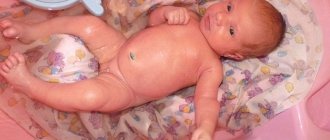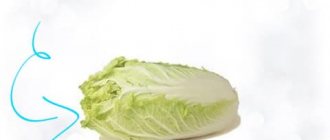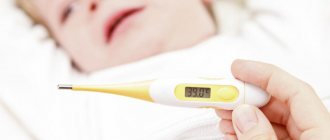Little children are constantly striving to touch something with their own hands, and modeling from plasticine is considered an excellent way to develop a child’s creative abilities, developing his imagination and perseverance. It doesn’t matter at all whether your child can create something special or not. The main feature is that during such activities he develops, calms down, and the process of thinking and speech is formed. However, it often happens that parents notice how their child has eaten plasticine. In this case, they immediately begin to panic and worry. But what to do if a child eats plasticine? Is it necessary to take him to the clinic? These are the questions that will be addressed in this article.
Plasticine composition
The plasticine used for modeling contains many different ingredients. The modeling material that is currently sold in children's stores is significantly different from the plasticine that was sold during the Soviet era.
Previously, animal lard was used for production, which was supplemented with various chemicals that were harmful to the human body. Currently, there are many different types of plasticine for babies, which differ from each other in their composition. But in most cases, this modeling material is made from the following ingredients:
- animal fat;
- beeswax;
- ground clay powder;
- ceresin;
- petrolatum;
- color dyes.
Vaseline does not allow the plasticine to dry out, so it remains plastic and soft for a long time.
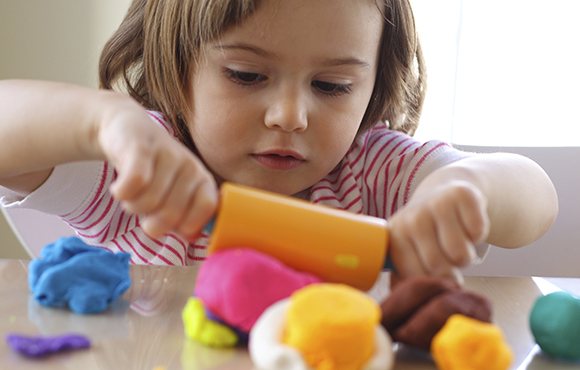
Recently, modeling dough has become very popular. It is made from almost the same ingredients that are used for plasticine. The only difference is that during production more lubricants are used - glycerin and petroleum jelly derivatives. That is why, after children play with this material, their hands always become greasy.
How to suspect esophageal obstruction
The esophagus along its length has three narrowed sections, called physiological narrowings. It is these sections that are most affected by pathological processes: ulcerations, burns, scars, tumors. They usually retain foreign bodies that the child accidentally swallowed. Usually these are small parts of toys, construction sets, coins, rings. If a candy (lollipop, toffee) is stuck in the esophagus, in a minute it will melt, decrease in size and safely reach the stomach.
Objects that are not food products face a different fate - they will have to be removed during esophagoscopy - an endoscopic operation.
How can a mother suspect the presence of a foreign body in the child’s esophagus and the obstruction caused by it? A large child will say that he held a coin (a toy, a piece from a construction set, etc.) in his mouth and accidentally swallowed it, and now feels pain behind the sternum, which intensifies when swallowing saliva. For this reason, he stops swallowing, and saliva accumulates in his mouth and then spits. What do 99 out of 100 mothers do? First of all, of course, they begin to scold the poor boy, who is already frightened by what happened.
My mother’s notations only intensify the spasm in the esophagus.
Before providing emergency care for a foreign body in children, pull yourself together, calm down yourself and reassure the child. Prepare a warm drink, preferably with enveloping properties that can make the foreign body slippery and facilitate its movement into the stomach: jelly, Hercules decoction, rice water, milk with butter. Let your child try a few sips. Sometimes these simple actions are enough to restore the patency of the esophagus.
If swallowing is impaired, then the liquid does not pass into the stomach, but pours out. Then you will have to go to the hospital to remove the foreign body instrumentally.
A small child won't tell you anything. But an attentive mother herself will notice that in the midst of complete health, the child suddenly developed a paroxysmal cough, gagging movements appeared, after which he became restless, somehow frightened, fixes his head and neck in one position, and every swallowing movement is accompanied by crying. Therefore, he stops swallowing saliva and it flows out of his mouth. These symptoms are enough to suspect a foreign body in the esophagus and go to the hospital to have it removed.
If a foreign body of the esophagus is not detected and not removed in time, it may encyst and not show itself for some time.
But in the future, an inflammatory process will develop in the esophagus - esophagitis, which can lead to perforation of the wall and the development of a serious complication - inflammation of the mediastinal organs, which can lead to death.
The child ate plasticine
Kids are very active, but parents cannot always keep an eye on their child. Often mothers come to the clinic to see a doctor because their child has eaten plasticine and they don’t know what to do. First of all, don't panic. There is no need to yell at your baby or reprimand him for this action. The fact is that modern plasticine is made from fairly safe materials that do not contain toxins. That is why eating plasticine will not cause any harm to a child’s body, no matter how old the baby is.

Foreign bodies of the stomach and intestines
Whether a foreign body gets stuck in the esophagus or passes into the stomach depends, as a rule, on its size, shape and type. The outcome in each case can be predicted quite accurately, depending on this, either observation or treatment is carried out. Once in the stomach, swallowed foreign bodies most often pass painlessly through the gastrointestinal tract and come out within 24-48 hours. Round, oval, or cuboid objects without sharp edges or protrusions should be of least concern to clinicians. In this case, the patient does not need hospitalization and can be sent home, but if abdominal pain, vomiting, blood in the stool later appears, or if the swallowed object does not come out naturally within 4-5 days, it is necessary to return to the hospital. X-ray examination allows you to determine the position of a foreign body in the gastrointestinal tract and verify that. whether it came out already or not. Indications for surgical removal include ongoing abdominal pain, vomiting, and blood in the stool. In the absence of these symptoms, surgery is necessary when the foreign body remains in the gastrointestinal tract for 4-5 weeks. Sometimes removal can be done using a flexible gastroscope, but more often a laparotomy is required.
Another group of foreign bodies in the gastrointestinal tract are objects with sharp edges or a tip, the size of which allows them to pass through the esophagus. In such cases, the patient must be hospitalized and closely monitored. It is not recommended to prescribe any special diet that helps protect the mucosa and the passage of a foreign body. At each bowel movement, stool should be carefully inspected. X-ray examination should be performed daily to determine the position of the foreign body. Dangerous symptoms of a foreign body of the stomach or intestines include abdominal pain, tension in the muscles of the abdominal wall, fever and intestinal bleeding, which, although rare, can nevertheless occur. The most common cause of minor bleeding is minor mucosal trauma or minor ulceration. Rapid advancement of a foreign body detected during examination is an indication for conservative treatment and observation. Surgical intervention for foreign bodies in the gastrointestinal tract is performed only in cases of severe bleeding or signs of peritonitis, as well as in cases where the foreign body does not move freely and quickly.
Some patients swallow long, thin foreign bodies - hair clips, parts of pencils or even whole pencils, pens, long nails, tools, chicken bones. Many of these objects also passed unhindered, but when swallowing precisely such foreign bodies, the highest frequency of complications or the absence of their independent passage is noted. Most often they get stuck in the pylorus, duodenum, in the area of the Treitz ligament and in the ileocecal angle. What prevents such objects from passing through these bends is not only the fact that they are hard, but mainly the tips that impede the passage, which, even if not pointed, can penetrate the intestinal wall, damaging and perforating it. In such cases, patients should be observed in a hospital. The operation is indicated in the presence of abdominal pain, bleeding or muscle tension in the abdominal wall, and also if the foreign body does not change its position within 24 hours.
Ingested batteries should be surgically removed if x-rays taken every 6 hours show no progress.
As a rule, we did not restrict patients' diets or change their diet, nor did we use medications. Only in rare cases was mineral oil prescribed to speed up the passage of a large foreign body. The use of drugs that enhance intestinal motility in such situations is contraindicated. To extract metal foreign bodies, we do not like to use tubes with magnets at the end, because small objects of this type come out on their own without this. It is dangerous to remove large objects in this way retrogradely blindly due to the threat of possible damage to the esophagus. For these purposes, we used flexible endoscopes, but out of 3 observations, the manipulation was successful in only one. This method helps only in exceptional cases; moreover, most objects that can be freely removed through the esophagus usually themselves pass painlessly through the gastrointestinal tract.
Complications of gastric and intestinal foreign bodies include bleeding, perforation, peritonitis, intra-abdominal or retroperitoneal abscesses, and intestinal fistulas.
Late complications of an undiagnosed or diagnosed foreign body remaining in the gastrointestinal tract include the consequences of its long stay in the appendix or Meckel's diverticulum, as well as its exit from the intestine into the free abdominal cavity or retroperitoneal space.
The article was prepared and edited by: surgeon I.B. Pigovich.
Video:
Healthy:
Related articles:
- Foreign bodies of the gastrointestinal tract Foreign bodies of the stomach and small intestine. There are 3 types of foreign bodies in the stomach and duodenum:...
- Foreign bodies of the biliary tract as a cause of PHES Foreign bodies in the biliary tract can be the causes of relapse of pain and the occurrence of PHES after cholecystectomy.
- Foreign bodies of the larynx in children There are not many types of pathology and conditions in childhood that would be as...
- Foreign bodies of the stomach All foreign bodies entering the stomach can be divided into the following groups: swallowed, penetrating through ...
- Foreign bodies of the esophagus Foreign bodies enter the esophagus with food due to the ingestion of foreign bodies contained in the mouth (dental...
- Foreign bodies of the bronchi Although foreign bodies can be found in any part of the tracheobronchial tree, most end up in ...
Danger
It will be serious if a child has eaten Play-doh or any other plasticine in large quantities. In this situation, the modeling material may get stuck in the baby’s larynx, causing suffocation. In such a situation, you should not scare your child, scold him or scream. We must try to calm the baby down and carefully remove the plasticine mass from his throat. If you can’t do this yourself, you should call an ambulance or take the baby yourself to the children’s clinic. Until the plasticine is removed from the child’s throat, it is necessary to ensure that the baby breathes through his nose.
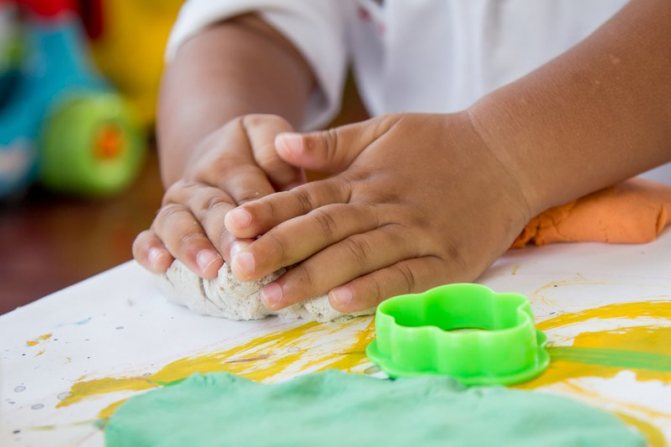
Necessary actions to help children
The first aid procedure depends on the specific type of foreign object. In some cases, special events are not carried out at all, and the product comes out on its own in the feces. Sometimes an immediate visit to a doctor is required, especially if time has been lost or the child is actively showing pathological symptoms.
The child swallowed an iron ball
Any metal objects, including spherical ones, are considered potentially dangerous foreign bodies if they are accidentally or intentionally swallowed by a child. What to do if a child swallows a metal ball:
- Assess the degree of danger and take emergency measures. It should be accurately determined that the small patient orally consumed just such an item. If there are obvious signs of suffocation, for example, due to an object getting stuck in the throat, then you should call an ambulance to the scene and try to remove the product yourself, if it is clearly observed with the child’s mouth open;
- Expect. In a situation where there are no signs of suffocation or breathing problems, and the metal ball is small in size (diameter less than 1 centimeter), you should wait until it is naturally excreted from the body with feces, without fail informing your local pediatrician about the situation.
The average time for the natural release of such a foreign object is 3-4 days. Giving a young patient emetics or laxatives is not recommended.
It is enough to introduce tough fibrous foods into the diet, which improves the passage of the object through the intestines. If a child develops symptoms of dyspeptic disorders or pain, it is necessary to immediately go to the hospital.
The baby ate a glass ball
If a child swallows a glass ball, and such an object successfully passes through the esophagus and stomach, then it does not pose a direct threat to the life and health of the baby, since it does not contain sharp edges. Like its metal counterpart, the glass ball comes out naturally after 3-4 days. The algorithm for providing first aid is identical.
The child swallowed a magnet
If the magnet was not spherical in shape, then you should immediately go to the hospital. The child will be placed in the general ward, and the process of the foreign object coming out will be constantly monitored.
There is a high risk of a non-spherical magnet getting stuck in the throat.
If there are signs of choking or breathing problems, you should immediately call an ambulance and try to pull out the foreign body through the oral cavity, if it is clearly visible.
The child swallowed a hydrogel ball
Hydrogel balls for children or orbs are popular modern toys, often purchased, including for young children. After entering the aquatic environment, small objects significantly increase their size within a day, growing in diameter. If it is problematic to swallow a large product that has already completely absorbed water, then the hydrogel ball in its original state quite easily penetrates the stomach orally.
The main danger of the orb is its significant increase in size after contact with liquids.
Immediately after swallowing, it does not cause any discomfort, but after 10-12 hours it can occupy a significant part of the stomach or intestines. Possible first aid if a child has eaten hydrogel:
- Accurate identification of the problem . It is necessary to ensure that it is determined that the child has swallowed the hydrogel beads;
- Inducing artificial vomiting. The child is given 1.5 liters of clean water to drink in one sitting, after which they are induced to vomit artificially by pressing on the root of the tongue. The procedure is repeated, if necessary, several times until the foreign object leaves the stomach.
The indicated measures are relevant in the first 2-3 hours after using the product. If the problem was not identified in time, then you should immediately call an ambulance at home, which will take the little patient to the hospital. Otherwise, the orbis increases in size and may block the gastrointestinal tract or partially rupture, releasing the internal contents into the stomach.
Baby ate silica gel
Quite often, small children tear open packages of balls used in shoes - these components absorb moisture and consist of silicon dioxide and silica gel. If a child eats shoe balls, there is no direct threat to life, but these items can cause severe dyspeptic disorders and an allergic reaction. First aid if a child has eaten silica gel:
- Inducing artificial vomiting. The child drinks 1.5 liters of clean water at a time, after which he is assisted in inducing artificial vomiting. If necessary, the event is repeated several more times until clean rinsing water appears;
- Absorbents . After washing, the small patient must be given available absorbents - activated carbon, polysorb, enterosgel, other substances in the amount as for classic food poisoning (according to the instructions);
- Condition monitoring . Monitor the child's condition. If no negative symptoms appear, then immediate medical attention is not advisable. Otherwise, you should call an ambulance.
What happens if you eat silica gel, watch the video:
Play dough
Another very popular modeling material is dough. Currently it is sold in any children's store. You can also make it yourself at home. To do this, you need to mix 200 g of fine salt, 200 g of flour and gradually, in portions, pour in 125 ml of water. You can make a variety of crafts from salt dough. This may include figures of people, animals, fruits or trees. If during the creative process your baby ate such material, then do not be alarmed. This modeling material also does not pose any harm. However, to be on the safe side, it is best to give your child the dough you made yourself.

Modeling mass
On the shelves of modern children's stores you can also find special masses for modeling. In some ways they resemble plasticine, but their composition will be slightly different. As a rule, modeling mass is made from dyes, polymer, and water, but the material is not considered toxic. The mass will be absolutely harmless to the baby if he swallows it. In this case, it will not cause any harm to the child’s body, will not participate in the digestive process, and will therefore come out naturally.
If a mother suddenly gets distracted and her baby swallows a piece of modeling compound, she will definitely know about it: the child’s mouth will be the same color as the modeling compound.

